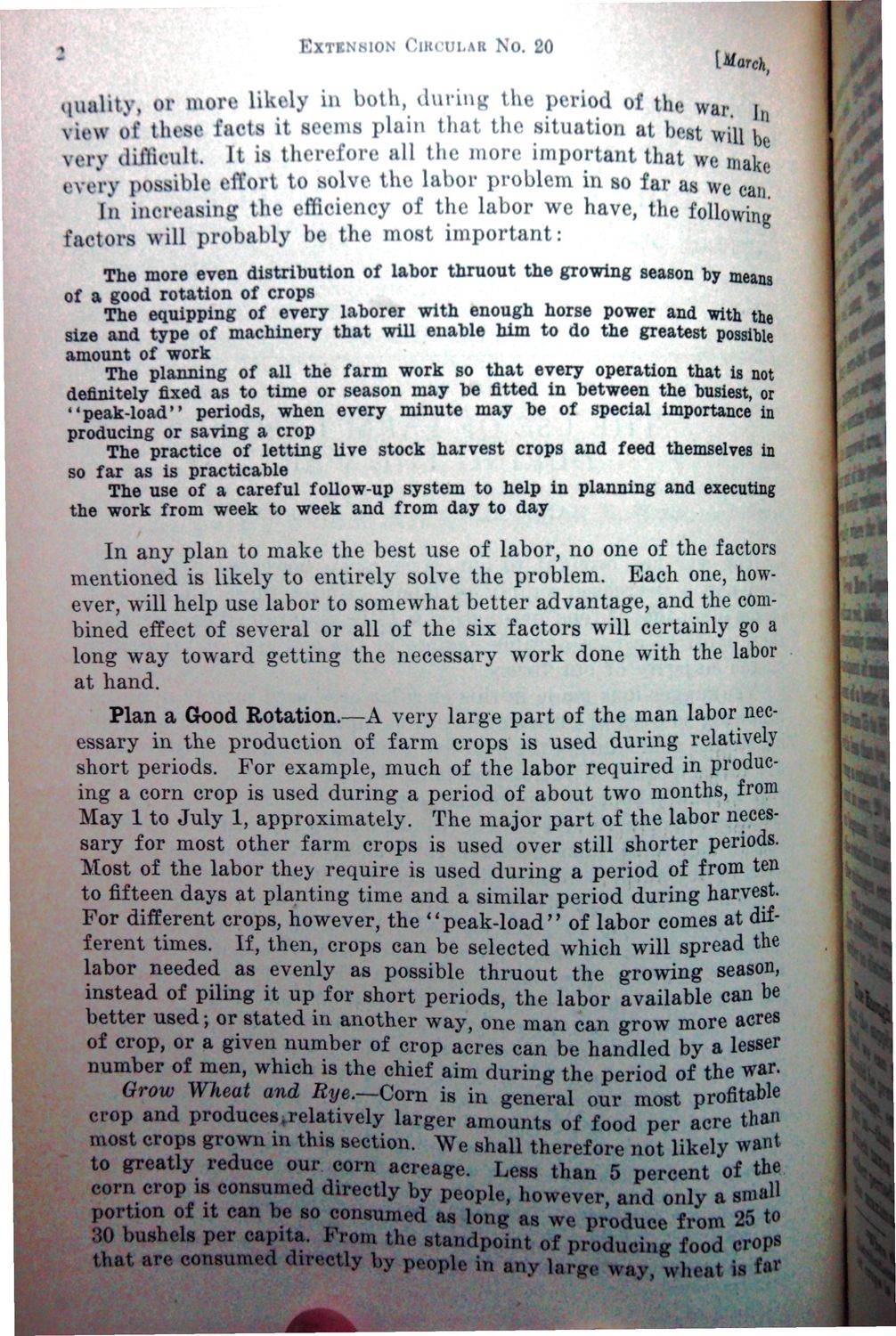| |
| |
Caption: War Publications - WWI Compilation 1923 - Article 28
This is a reduced-resolution page image for fast online browsing.

EXTRACTED TEXT FROM PAGE:
* 1 EXTENSION CIRCULAR NO. 20 , , I March, quality, or more likely in both, during the period of the war j n vii w of tluso. facts it seems plain that the situation at bent will be very diflii-ult. It is therefore all the more important that we mafo every possible effort to solve the labor problem in so far as we can In increasing the efficiency of the labor we have, the following factors will probably be the most important: The more even distribution of labor tbruout the growing season by means of a good rotation of crops The equipping of every laborer with enough horse power and with the size and type of machinery that wiU enable him to do the greatest possible amount of work The planning of all the farm work so that every operation that is not definitely fixed as to time or season may be fitted in 1 • 'peak-load*' periods, when every minute may be of special importance in producing or saving a crop The practice of letting live stock harvest crops \ Qd feed themselves in so far as is practicable The use of a careful follow-up system to help in ; lanning and executing the work from week to week and from day to day In any plan to make the best use of labor, no one of the factors mentioned is likely to entirely solve the problem. Each one, however, will help use labor to somewhat better advantage, and the combined effect of several or all of the six factors will certainly go a long way toward getting the necessary work done with the labor at hand. Plan a Good Rotation.—A very large part of the man labor necessary in the production of farm crops is used during relatively short periods. For example, much of the labor required in producing a corn crop is used during a period of about two months, from May 1 to July 1, approximately. The major part of the labor necessary for most other farm crops is used over still shorter periods. Most of the labor they require is used during a period of from ten to fifteen days at planting time and a similar period during harvest. For different crops, however, the "peak-load" of labor comes at different times. If, then, crops can be selected which will spread the labor needed as evenly as possible thruout the growing season, instead of piling it up for short periods, the labor available can be better used; or stated in another way, one man can grow more acres of crop, or a given number of crop acres can be handled by a lesser number of men, which is the chief aim during the period of the war. Grow Wheat and Rye.—Corn is in general our most profitable crop and produces .relatively larger amounts of food per acre than most crops grown in this section. We shall therefore not likely want to greatly reduce our corn acreage. Less than 5 percent of the corn crop is consumed directly by people, however, and only a small portion of it can be so consumed as long as we produce from 25 to 30 bushels per capita. From the standpoint of producing food crops that are consumed directly by people in anv large way wheal is I'ar
| |